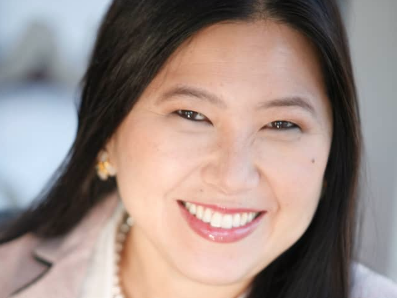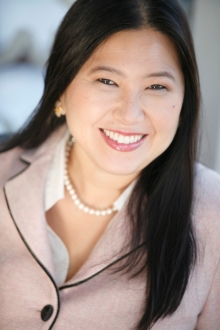Women are increasingly worried about breast implants. In 2016, the American Society of Plastic Surgeons reported that 400,000 women in the United States had breast implant surgery. About 75% were for cosmetic breast augmentation; the rest were for breast reconstruction after mastectomy. While some breast implants last for decades, most are removed well beforehand. Why?
Implants are foreign bodies that incite a scar tissue barrier called a capsule. Capsules may be soft, filmy and hardly noticeable, or may become painful, hard and tight, like a shell around the implant that starts to shrink and squeeze. Capsular contracture is uncomfortable and a common reason for implant removal. Other reasons include infection, because the implant lacks a blood supply to fight bacteria; rupture, in which the saline or silicone gel filling leaks; and extrusion, in which the implant erodes out of the skin.
In addition, some women with breast implants report symptoms such as chronic fatigue, joint pains, food allergies, skin and hair problems and other issues that patients call Breast Implant Illness (BII). A 2019 M.D. Anderson Cancer Center study found that women with silicone breast implants had six to eight times the normal population rates of rare diseases like rheumatoid arthritis, scleroderma and Sjogren syndrome. A 2018 Israeli study found a 22% increase in autoimmune or rheumatic disorders in women with silicone breast implants. While a cause-effect relationship between breast implants and autoimmune issues remains unproven, the association disturbs women who believe they developed unexplained problems after getting breast implants.
Finally, in 2011, the U.S. Food and Drug Administration noticed that women with breast implants had a higher incidence of a rare immune system cancer called anaplastic large cell lymphoma (ALCL). In 2016, the World Health Organization renamed the disease Breast Implant-Associated Anaplastic Large Cell Lymphoma (BIA-ALCL), a T-cell lymphoma that developed following breast implants in up to 1 in 3,800 women with breast implants. Patients with BIA-ALCL usually have retained fluid around the breast implant or a mass on the implant capsule, which can sometimes be seen on breast imaging and biopsied.

How are breast implants removed? The quickest procedure involves removing only the implant while leaving behind the entire capsule, because thin, filmy capsules may eventually be reabsorbed by the body. For thickened capsules, the surgeon can perform a capsulotomy by making incisions to break up and soften the capsule. If patients want their capsule removed, most surgeons perform a partial capsulectomy. When implants are underneath the pectoralis muscle, capsular material is fused to the chest wall or ribs, and is very close to the lungs. To save time and avoid lung injury, surgeons routinely leave the chest wall capsule. A complete capsulectomy is a lengthy procedure that removes not just the implant, but the entire capsule that surrounds it, including the portion on the chest wall. In an en bloc capsulectomy, the surgeon removes the implant and capsule in one piece.
If a woman decides to remove her implants without any other procedures, immediately after surgery her breasts will look deformed and empty. Over time, however, the breast skin will contract and any remaining breast tissue will re-expand — much like resolving indentations in the skin after wearing tight clothing. It can take weeks or even months, but the body has a remarkable ability to equilibrate, and for most women with breast tissue their breasts will look normal again without further surgery.
That said, if a woman has minimal breast tissue and proportionally large implants, she may be unhappy with the appearance of her natural breasts. Some women may want a breast lift, fat transfer, new implants or even natural tissue free flaps. Additional procedures can be performed at the same operation as the implant removal, or later on when a woman sees how her natural breasts look after they have been given a chance to heal. Extra procedures, however, such as breast lifts, can involve additional scarring and extend anesthesia time, leading to a more difficult recovery. For this reason, women may take a “wait-and-see” approach to keep their post-operative recovery as easy and simple as possible.
Women with implants for breast reconstruction lack breast tissue due to mastectomy. Thus, after implant removal, they must decide whether to “go flat” or undergo breast reconstruction again. If implant removal is to treat capsular contracture, saline implant rupture, or BII, it may be possible to undergo breast reconstruction again in the same operation. If a woman has a severe infection, ruptured silicone breast implant, or BIA-ALCL, it may be necessary to allow the tissues to heal for several months before considering other breast reconstruction options. Other options include new breast implants or natural tissue breast reconstruction, a more extensive surgery that creates living breasts. Natural tissue breast reconstruction produces soft, warm breasts that can fight infection due to its blood supply, will grow and shrink as the patient gains and loses weight, and nerves can even be reconnected to restore breast sensation.
Whatever the reason for implant removal, women should be fully educated about what to expect. Capsular contracture, infection, rupture, and BII are the most common reasons for implant removal. Women removing their breast implants should consider whether they want some, all, or none of their capsule removed. At the end of the day, a woman’s body is her own, and she should have agency over it.
Constance M. Chen is a board-certified plastic surgeon with special expertise in the use of innovative natural techniques to optimize medical and cosmetic outcomes for women undergoing breast reconstruction. She is clinical assistant professor of surgery (plastic surgery) at Weill Cornell Medical College and clinical assistant professor of surgery (plastic surgery) at Tulane University School of Medicine. constancechenmd.com.


